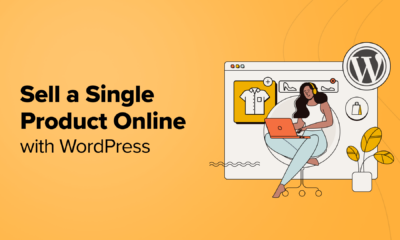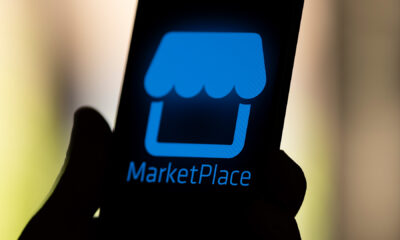
“Most eyewear in the world is one size fits all,” explained Mohala founder Ashley Johnson. “It’s leaving out women who have different nose bridges, face widths, and face shapes than the standard face shape. It causes the problems of sunglasses or eyewear sliding down the face, resting on cheeks, leaving imprints, and hitting lashes.”
Headquartered in Hawaii, Mohala Eyewear is a startup with a unique approach to designing sunglasses. The company makes adjustable-frame eyewear with various nose bridges and widths that can be customized to fit different faces.
In addition to bringing more inclusivity to eyewear, Mohala has a mission to help fund education for girls in Bangladesh, Cambodia, India, Laos, Nepal, Sri Lanka, Tanzania, and Vietnam. For each pair of sunglasses sold, Mohala donates a week of school.
Upon launching the company, Johnson had two challenges to address. First, she needed to let people know about Mohala’s unique product offering. She also needed to help people determine which size frame worked best for them.
While most people know their dress or shoe size, the concept of sunglasses that fit your specific nose bridge is a new one. Johnson wanted to give her customers the opportunity to try the different nose bridge sizes so they could find the best fit for their face shape.
Said Johnson, “The biggest advantage brick and mortar stores have over e-commerce stores is that customers can try multiple things on before they pay for it. I needed to figure out how my e-commerce business could get over that hurdle.”
A startup with a problem to solve
Johnson needed a solution that enabled her customers to try her different frame designs and easily return what they didn’t want. At the time of her research, there wasn’t much available for small retailers to facilitate try-before-you-buy (TBYB) programs.
She initially reached out to Shopify, the platform she uses to host her e-commerce store, but they had nothing that fit this need at the time. Ultimately, Johnson could find only two companies with the TBYB technology she needed. One company turned her away because they were only working with brands doing a certain sales volume.
Said Johnson, “The other company was Blackcart, which had fundraised and launched during the pandemic. They initially said I was too small, but I convinced the owner that small brands need this service too, so he said he would take a chance on me.”
Blackcart launched in June 2020 and their TBYB technology integrates with top e-commerce platforms including Shopify, Magento, Salesforce, and WooCommerce. But when Johnson reached out to them, they were just starting out. Blackcart’s software gives retailers the ability to ship items to a customer’s home with free and easy returns of what they don’t want. The customer only pays for what they choose to keep, plus a nominal deposit fee when they place their order.
A necessary customer experience
Companies like Warby Parker and (naturally) Amazon have TBYB models. In the former case, shoppers can select 5 frames to test at home. Amazon’s program allows shoppers to select up to 6 different items of clothing to try on at home.
According to a Forrester study commissioned by Shopify, 57% of consumers say TBYB programs say that the flexibility and convenience of trying new products influences their decision to buy online.
Johnson notes that just like larger retailers, small businesses need the option to implement a TBYB program. She emphasized that being able to try something before you buy it is important to the shopping experience, even (or especially) for e-commerce purchases.
“I think all customers are going to expect it,” she said. “It would be hard for Mohala’s customers if they wanted to try all three nose bridges. They would have to spend $600 up front and then return things. Now, they pay a $10 deposit and then mail back anything that doesn’t fit.”

Most people who use the TBYB feature keep at least keep one pair of glasses and sometimes they keep two. The $10 deposit is a fee that Blackcart recommended Mohala start with.
Blackcart’s TBYB feature enables Johnson’s small team of five to manage the entire trial process via a separate portal where they can easily process returns. Since it integrates with Shopify, refunds and payments can be processed and reported to Shopify. Mohala fulfils them the same way they fulfill any normal order.
“It’s a very smooth process. Blackcart has continued to upgrade their technology, so it’s just gotten better and better,” said Johnson.
Johnson’s team has monthly meetings with Blackcart to review results of the program, identify opportunities, and discuss any new features (e.g., more robust reporting tools were recently added to help with banking reconciliation).
Get the daily newsletter digital marketers rely on.
Try-before-you-buy boosts sales
Mohala experienced a 12% increase in sales in 2021, the year that they added Blackcart. Part of the increase was due to partnering with Nordstrom at the end of 2021 so that Mohala’s glasses could be sold by the retailer. Over the past two months, they’ve had more revenue from Blackcart than from regular orders.
“It shows that people prefer to have that try-before-you-buy experience,” said Johnson. “I think it just feels safer. If a customer likes three different colors or styles, but isn’t sure which one is going to look best on them, it’s a safer way to shop.”
Johnson’s advice to fashion and beauty retailers is that they should all have a TBYB component as part of their business model, regardless of their size. There is clearly a need for this technology in the e-commerce ecosystem.
“I really believe in this software and this customer experience,” said Johnson. “Blackcart has been very willing to work with smaller startups.”
Read next: More case studies by Jacqueline Dooley
Johnson notes that it’s important to determine how the TBYB feature aligns with your offering. When they launched the feature, they didn’t set a three pair requirement so customers could try one pair at a time. “Requiring three pairs to try made more sense within the parameters of the program for us along with the $10 deposit.”
A try-before-you-buy strategy should be determined based on your company’s offering and goals, but Johnson’s biggest advice is simply to “do it.” Implementing this software can give your company a competitive advantage and provide an overall better shopping experience for e-commerce customers.


































You must be logged in to post a comment Login